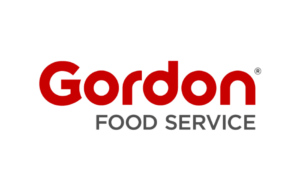The seven key things you need to know about Ontario’s Healthy Menu Choices Act.
Have you heard about the Healthy Menu Choices Act? It is new legislation the government of Ontario passed to combat obesity and empower consumers to make healthier choices. The act states that foodservice operations with 20 or more locations within Ontario will need to display calorie counts directly on their menus. It goes into effect January 1, 2017, and may be the first of broader, nationwide regulations to come. It could also lead to increased consumer demand for healthier menu options and more transparent menu labeling.
Wading through the complete act and its related regulations is something every operator in Ontario should do. To help you wrap your arms around it, we’ve pulled out seven highlights.
1. Types of items requiring calorie counts on menus
The Healthy Menu Choices Act covers any restaurant-type food or drink item that:
- Will be consumed on the premise (at the restaurant)
- Takeout that does not require further preparation by a customer
There are some food and drink items that are exempt from this legislation. If you have specials that are on your menu for less than 90 days per calendar year, you don’t need to display calorie counts for them. You also won’t need to post calories for condiments not listed on the menu but available free of charge.
2. Types of menus requiring calorie counts
If your menu is available in multiple formats it is likely you will have to display calories on each version. Here are the known menu types that will require calorie counts:
- Paper menus
- Electronic menus
- Menu boards
- Drive-through menus
- Digital menus (online or within an app)
- Advertised menus
- Promotional menu flyers
Exempt from displaying calories are advertisements for limited-time offers, as long as they are not on the menu for more than 90 days per calendar year, or for advertisements that don’t include any prices. You also don’t have to share calories on billboards or in TV and radio ads.
3. How calorie counts need to be displayed
The regulations are very detailed on this topic and can be quite complex if you have multiple flavour options or sizes. To summarize:
- Caloric information must be beside the name or price of a standard food item and appear in the same font, format, size and be as prominent as the price
- Calories should be easy to read and unobstructed
- Calories need to be rounded to nearest 10 for items over 50 calories
- Calories need to be rounded to the nearest 5 for items under 50 calories
- The word “calorie” or abbreviation “cal” must be displayed as a header above the column listing the number of calories or beside the number of calories for each food item in the same font, size and prominence as the number of calories
Shared Plates
You have two options for handling food items that are meant to be shared with other people.
- Display the total number of calories of the food item and the number of servings, or
- Show the number of calories for one serving of the food item and the total number of servings
Optional flavours, varieties and sizes
For food items available in a number of flavours, varieties or sizes listed on a menu:
- If the menu does not list the flavours, varieties or sizes available, and only includes the general description of the standard food item, then only the calorie range from lowest caloric option to the highest caloric option needs to be listed
- If the menu lists all the specific flavours, varieties or sizes of the food item, then the calories for each flavour, variety and size must be displayed
Additional Toppings
Food items that have optional additional toppings, sauces, dressings or condiments that are listed on the menu should be handled by:
- Displaying the number of calories for the basic food item and separately declaring the calories for each supplementary item that is listed
- Including a statement indicating that the calories are additional to the calories displayed for the basic food item, and if the supplementary item complements more than one size of the basic item you must provide the calories for each size of an additional item or a caloric range
Combo meal
For a menu that includes combination meals with two or more variable items:
- Calories must be displayed as a range between lowest and highest calorie variations
- When variations are individually listed on the menu, the number of calories for each variation must be displayed
- If the menu gives the option to size up or down, the calories must be declared for the increased or decreased size
4. How to display calorie counts for drinks
Calories will need to be displayed for both alcoholic and non-alcoholic beverages. To avoid showing calories for every alcoholic beverage, display the below table in the menu in a similar format, close to where alcoholic beverages are listed in your menu. The table must be visible when the menu is opened to any page that includes alcoholic beverages, in the same font, size and visibility as the alcoholic beverage items in your menu.
[[{“fid”:”171986″,”view_mode”:”default”,”fields”:{“format”:”default”,”field_file_image_alt_text[und][0][value]”:”How to display calorie counts for beverages per the Healthy Menu Choices Act in Ontario.”,”field_file_image_title_text[und][0][value]”:”How to display calorie counts for beverages per the Healthy Menu Choices Act in Ontario.”},”type”:”media”,”field_deltas”:{“1”:{“format”:”default”,”field_file_image_alt_text[und][0][value]”:”How to display calorie counts for beverages per the Healthy Menu Choices Act in Ontario.”,”field_file_image_title_text[und][0][value]”:”How to display calorie counts for beverages per the Healthy Menu Choices Act in Ontario.”}},”attributes”:{“alt”:”How to display calorie counts for beverages per the Healthy Menu Choices Act in Ontario.”,”title”:”How to display calorie counts for beverages per the Healthy Menu Choices Act in Ontario.”,”height”:”324″,”width”:”469″,”class”:”media-element embedded-entity file-default”,”data-delta”:”1″}}]]
5. An additional statement will be required
[[{“fid”:”171991″,”view_mode”:”default”,”fields”:{“format”:”default”,”field_file_image_alt_text[und][0][value]”:”Statement that restaurants in Ontario need to display per the Healthy Menu Choices Act.”,”field_file_image_title_text[und][0][value]”:”Statement that restaurants in Ontario need to display per the Healthy Menu Choices Act.”},”type”:”media”,”field_deltas”:{“1”:{“format”:”default”,”field_file_image_alt_text[und][0][value]”:”Statement that restaurants in Ontario need to display per the Healthy Menu Choices Act.”,”field_file_image_title_text[und][0][value]”:”Statement that restaurants in Ontario need to display per the Healthy Menu Choices Act.”}},”attributes”:{“alt”:”Statement that restaurants in Ontario need to display per the Healthy Menu Choices Act.”,”title”:”Statement that restaurants in Ontario need to display per the Healthy Menu Choices Act.”,”height”:”380″,”width”:”180″,”style”:”width: 180px; height: 380px; float: right;”,”class”:”media-element embedded-entity align-left file-default”,”data-delta”:”1″}}]]
Starting January 1, 2018, you will need to display or include the below statement:
“Adults and youth (ages 13 and older) need an average of 2,000 calories a day, and children (ages 4 to 12) need an average of 1,500 calories a day. However, individual needs vary.”
This statement needs to be presented in one of two ways:
1. A sign or signs that are posted so they are easy to see and read by customers where they order food or drink or serve themselves or
2. In every menu on the premise
- If the menu has multiple pages, the statement must be visible when the menu is opened to any page that includes food items
- It must be placed in close proximity to the food items on the page
- It must appear on the menu in the same font, format, size and prominence as the name or price of the food items
6. Methods for determining calorie counts
There are two methods that you can use to determine the number of calories in your menu items:
Testing by a laboratory that the owner or operator of the foodservice operation reasonably believes will provide accurate results or
Nutrient analysis method that the owner or operator of the foodservice operation reasonably believes will provide accurate estimates of the number of calories in the food items
7. We can help
The Gordon Food Service Canadian Nutrition Resource Centre has implementation guidelines available specific to different foodservice operations. We also have recipe management software you can use to determine the calorie counts of items on your menu. Contact the CNRC at nutritionrc@gfs.com or 1-866-814-1272 for details.
This information was condensed from the Ontario Regulation 50/16 made under the Healthy Menu Choice Act, 2015. Read the full version.
This article is for informational purposes only. It is not legal advice and is no substitute for an actual attorney consultation. Always consult your attorney regarding your specific circumstances.










